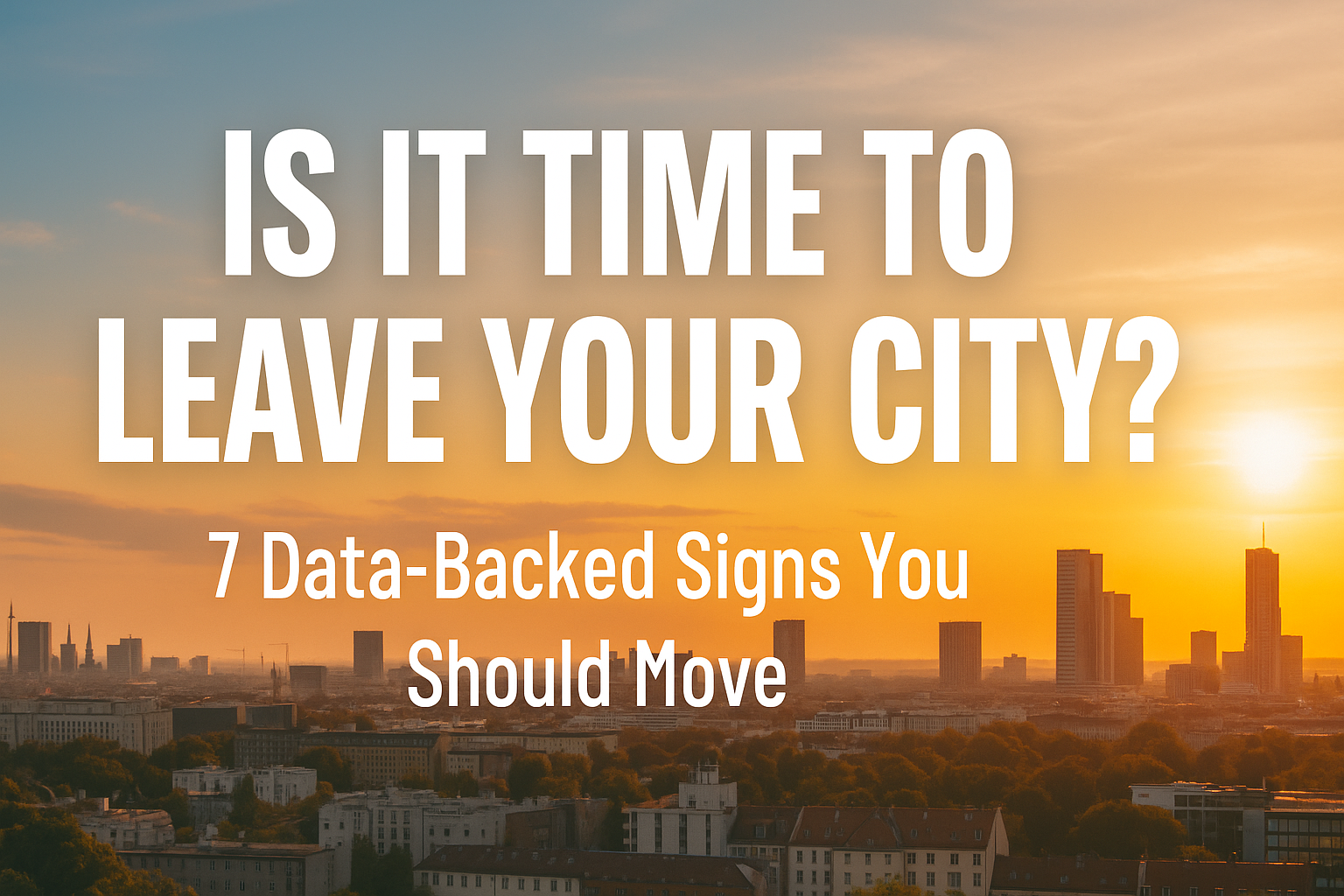Is It Time to Leave Your City? 7 Data-Backed Signs You Should Move
Most people stay in the same city for far too long—not because they love it, but because it’s familiar.
If you’ve been feeling like your city isn’t quite working for you anymore, you’re not alone. Millions of professionals, families, and remote workers are asking themselves the same question: "Should I leave?"
This guide will help you answer that—using data, not just vibes. We’ve identified 7 measurable, trackable signs that your current city might be holding you back financially, mentally, and professionally.
1. You're Spending Over 40% of Your Income on Rent
According to global housing benchmarks, if your rent consumes more than 30% of your take-home income, you’re considered "rent-burdened."
If it’s 40% or more? You’re likely:
- Struggling to save
- Living paycheck to paycheck
- Missing out on financial freedom
Example:
| City | Net Monthly Pay | Avg. 1BR Rent | Rent % |
|---|---|---|---|
| London | $4,700 | $2,600 | 55% |
| Lisbon | $3,200 | $1,150 | 36% |
| Tbilisi | $2,000 | $450 | 22.5% |
If rent is your biggest source of stress, your city is too expensive for your income level.
2. Your Salary Hasn’t Kept Pace With Inflation
If your income has stayed the same while everything else—groceries, transport, bills—has gone up, you're actually earning less in real terms.
Use this formula:
Adjusted Salary = Your salary / Local inflation index
Compare it to national averages or other cities.
In many developed cities, salaries haven’t risen with inflation, while remote-friendly locations have become competitive.
3. Your Savings Rate Is Below 20%
The most sustainable cities allow you to save at least 20% of your net income monthly. If your savings rate is in the single digits (or zero), you're not building a future.
| City | Net Income | Avg. Costs | Savings Potential |
|---|---|---|---|
| Berlin | $3,200 | $2,500 | $700 (22%) |
| NYC | $6,100 | $5,400 | $700 (11%) |
| Kuala Lumpur | $2,900 | $1,600 | $1,300 (45%) |
If you’re not saving, you’re spending to stay still.
4. Your Quality of Life Score Is Dropping
This is where data meets feeling.
Use tools that factor in:
- Air quality
- Public safety/crime
- Commute time
- Healthcare access
- Outdoor/green space
If your city scores poorly, and you feel it daily, that’s a red flag. Even if you're paid well, it might not be worth the trade-off.
Top-scoring quality-of-life cities (2025):
- Vienna
- Valencia
- Tallinn
- Zurich
5. You're Working Remote, But Paying Full-City Premiums
If you work remotely but still pay rent, taxes, and transit like a downtown commuter, ask yourself: what are you paying for?
You could:
- Move to a lower-cost city (even within your country)
- Relocate to a remote-first hub with low taxes and strong infrastructure
- Pay less, live better, save more
Best remote-friendly cities in 2025:
- Tbilisi
- Chiang Mai
- Lisbon
- Cape Town
6. There's No Clear Path to Residency or Stability
Living in a city that makes it hard to stay long-term—due to visa restrictions, rising rent, or lack of housing—can cause constant stress.
Ask:
- Can I renew my visa easily?
- Is there a PR or citizenship option?
- Can I afford to stay if prices rise 10%?
If the answer is no, your city might be a short-term romance, not a long-term partner.
7. You’ve Hit a Career or Networking Ceiling
If your current city lacks opportunities in your field, or you’ve already outgrown its scene, staying might stall your growth.
Check:
- Are there better roles elsewhere?
- Would another city give you more industry events, meetups, exposure?
- Could you negotiate a raise just by relocating?
Don’t wait until burnout to start searching.
Final Thought
Sometimes the city you live in is the problem.
Not you. Not your job. Not your spending.
Use data to check your blind spots.
If you’re rent-burdened, underpaid, locked out of growth, or just surviving—it might be time to go.
Compare your current city to where you could thrive using our migration tool.
